The HTC 10 Review
by Joshua Ho on September 19, 2016 8:00 AM ESTFinal Words
It’s been a long road to get to this point. In order to try and take the HTC 10 as a whole then we can start by reviewing the details. At a high level, the HTC 10 is specced to take on the high-end Android market. As far as design goes, this represents HTC’s first major design shift since the One M7. I think it’s easy to write it off as a minor change but this device is now truly all metal and glass unlike the One M7, M8, and M9. Instead of plastic speaker grilles or plastic sidewalls like the previous designs, the front is just a sheer piece of glass with no logos or anything to really distract from the experience. The back cover is similarly almost all aluminum other than the antenna insulating lines and the RF window for GPS at the top of the phone. The logo on the back is painted on rather than a discrete, separate piece, and the FCC markings on this PVT are absent altogether in mass production units.
This design really in a lot of ways is HTC finally getting serious about the details as well. If you looked too closely at most of the phone the lack of ID detailing was apparent with SIM trays in random areas and poor color matching as well as buttons and other pieces scattered in a somewhat haphazard fashion. Things like the buttons are so much better than previous models with no take-up and a clean, crisp break with a hard stop. The top-mounted 3.5mm jack is not necessarily ideal for ergonomics but it’s still acceptable. The use of mostly-flat glass is appreciated as well, as those that like using screen protectors will be able to fully cover the display and capacitive buttons with a tempered glass protector unlike the Galaxy S7 or Note7. The move back to capacitive buttons also means much better ergonomics for typing. The One M8 and One M9 both had issues with this as the keyboard was just too high up on the phone to type comfortable with two thumbs, and the HTC 10 resolves this. If HTC makes another high-end device, I think they could afford to go another year before seriously changing the design of their phones again.
If there’s anything that really brings the HTC 10 down the most, it’s the display. While the calibration of the display is good enough and the use of a sunlight display mode means that I’ve never really struggled to see what I’m reading in direct sunlight, the HTC 10’s LCD panel has fairly low maximum brightness, contrast, and noticeable color shift with viewing angle changes. I suspect HTC may be constrained by their relative lack of economies of scale here which is contributing to the problem but for next year the display really needs to get better if possible. One interesting route if HTC intends to keep using LCD would be JDI’s “full active” displays which almost entirely eliminate the bezel requirement for the display driver, which would allow for something like a stereo front-facing speaker design with no “HTC bar” that has been associated with such designs in the past. AMOLED is another viable alternative here, but I’m not sure if HTC can get access to high quality AMOLED displays that would let them compete with other major OEMs.
As far as overall system performance goes, it’s not really a huge surprise to know that the HTC 10 mostly performs similarly to other Snapdragon 820 devices. The only notable slowdown here is the poor performance of the location provider in tests like Discomark and poor performance in the PCMark Video Playback test. These are long-standing issues at this point that persist across system updates so I suspect that solving such things may be more complicated than it really seems on the surface. Storage performance is also not necessarily as easy to call as it might seem despite the use of eMMC as the SLC/TLC hybrid architecture means that the HTC 10 has much faster storage in some scenarios relative to most UFS storage we’ve seen in devices this year. I suspect that by next year though it won’t really be possible to repeat this kind of relative performance and UFS or NVMe will be necessary to keep pace.
In battery life, the HTC 10 is actually fairly impressive when it comes to how well HTC can keep up with the competition. While the Galaxy S7 with Exynos 8890 is still going to last longer, for its size I don’t believe there’s another Snapdragon 820 device with better battery life. It doesn’t necessarily last as long as AMOLED at this point though unless you’re doing web browsing or similar scenarios with high APL. Throttling is also better-controlled than most devices I’ve seen with graceful degradation rather than sinusoidal behavior.
When it comes to the camera on the HTC 10, there are a lot of bright spots but also areas where it falls flat. For whatever reason the HTC 10 is just unusually slow to save images but focuses as fast as just about anything else with PDAF. For obvious reasons the Galaxy S7 and Note7 are still much faster at focusing, and Samsung has really optimized aggressively to get photo captures to be basically instant while the HTC 10 clearly has some latency in capture. On the other hand, the images produced by the HTC 10 on the whole are almost always better, and I would argue that video capture is usually better as well. There’s definitely room to improve here in the form of better optics, better encode settings, and faster capture, but the HTC 10’s camera is as good as, if not better than what you get in the Galaxy S7 and Note7.
High-end smartphones are increasingly differentiated by software and the HTC 10 is no different in that regard. HTC Sense is probably as good as it gets in the Android space if you have to pick an OEM UI though, as HTC has really focused on performance and removing redundancy in the shipping ROM. The HTC 10 with Sense is clearly smoother in most cases than something like the Note7 with TouchWiz, and in general what HTC apps are still around are well-designed to match with Android design guidelines so there aren’t any strange behaviors to learn around if you’re coming from a Nexus device. Third party apps don’t feel foreign either which is a nice bonus. It’s not all perfect though as there are still areas where HTC could stand to further optimize in areas like the weather application to try and get as close to 60 FPS as possible. The strange auto brightness and volume overlay behavior is also noteworthy, as is the lack of quick settings customization. Fixing these little niggles would get rid of pretty much all UI friction.
When it comes to WiFi, the HTC 10 is definitely disappointing. Received power is just not particularly competitive, and roaming latency is not very good. It’s strange that this is the case despite excellent cellular and GNSS reception, so I suspect there may be some interesting story behind the reason why this is happening. I suspect that these issues will go away as we continue to highlight them, but it’s concerning that it takes someone with the ability to use enterprise-grade test equipment in order to really discover these kinds of things.
When it comes to touch latency, to some extent HTC really is living up to their promises here. However, it seems that the claim is specific to drag latency where the HTC 10 is noticeably quicker to respond than something like the Note5 or the One M9. In general, the HTC 10 is one of the most performant Android devices I’ve used all year. It really feels like the Nexus 5 in a lot of respects when it comes to overall smoothness and responsiveness, which definitely wasn’t the case with the One M9.
In light of everything, the HTC 10 feels like it shows a lot of attention to detail and care that seems to be absent in a lot of devices that I’ve had to review in the past few years. There are definitely sore spots like the display and WiFi, but on the whole the great camera, audio, design, and software experience come together to make a great phone that has really aged quite well over the past few months. There’s been a lot of discussion about how the price is too much, but realistically it looks like the price is closer to 600 USD due to frequent discounts. Considering the direct competition in the price range, on the basis of the device itself I would argue that the price is about in line with expectation. Even now, with the iPhone 7 and Note7 available my experiences with the HTC 10 lead me to believe that it’s well worth buying still if you’re looking for a high-end Android device that can be used with one hand.



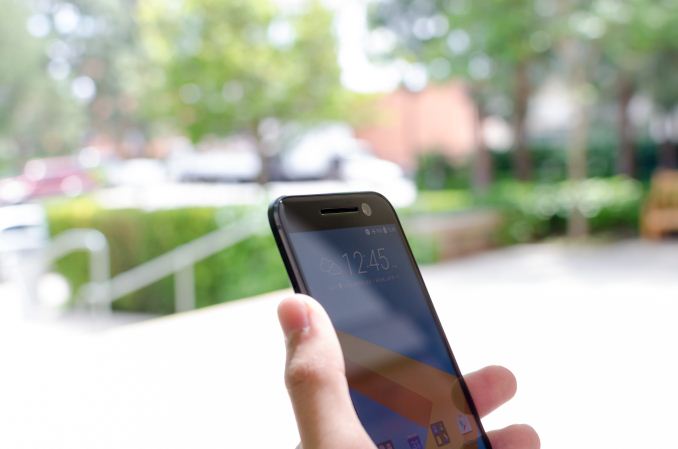
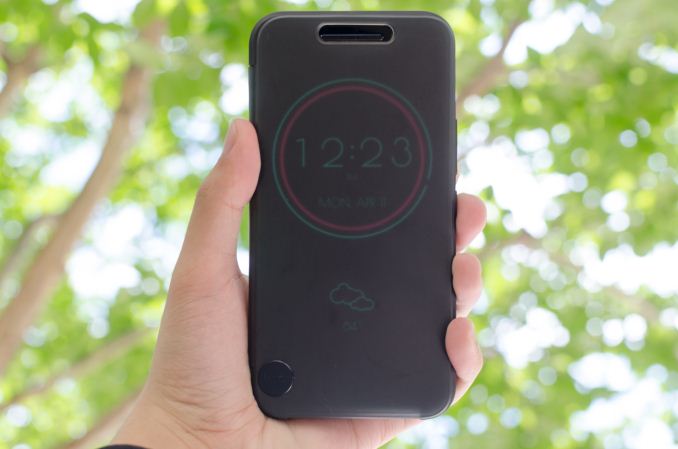
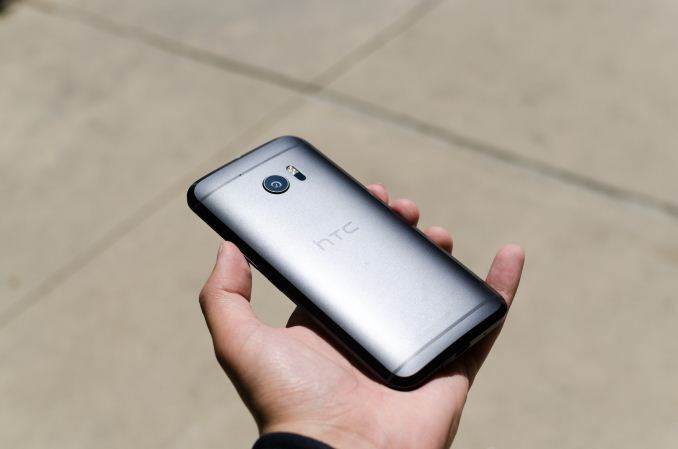
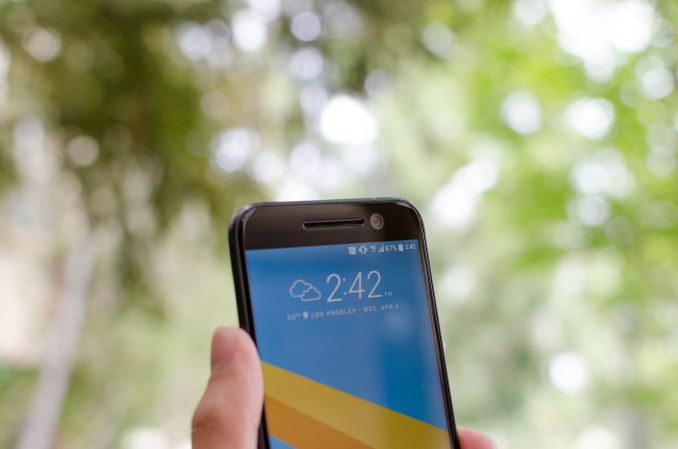
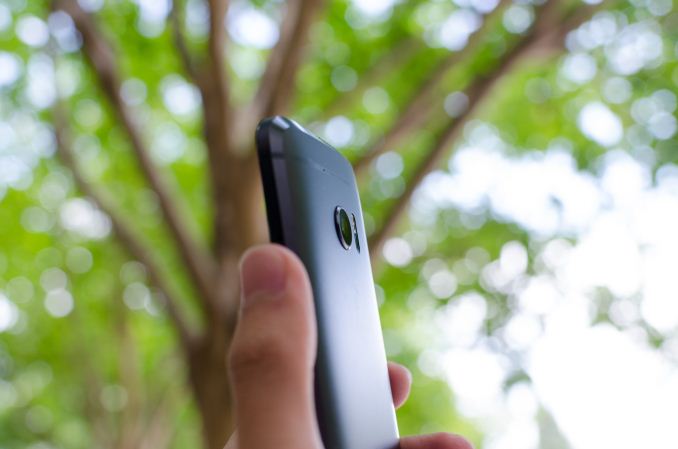









183 Comments
View All Comments
Awful - Monday, September 19, 2016 - link
This review is interesting insofar as it gives insight into what we might see coming from HTC in the new Pixel (Nexus) phones on Oct 4...so in some ways the timing isn't so bad. I gave up on 3rd party phones after the nexus 5...Impulses - Thursday, September 22, 2016 - link
Ditto.Fidelator - Monday, September 19, 2016 - link
Fantastic review, the HTC 10 is really as good as I hoped it to be, which is basically the top of the hill, I'm sure a lot of readers would appreciate a new Audio quality section on these reviews, of course, keeping some subjective comments on the speaker quality and listening experience, it's an important piece of what makes a device great.Definitely considering this as my next device
randomguy128 - Monday, September 19, 2016 - link
What do you mean by featured review. Did HTC have to pay you guys to finally do this reviewvision33r - Monday, September 19, 2016 - link
Good phone 8 months ago. HTC failed to deliver a bigger size 10, fewer people in Asia buys phones smaller than 5.5" these days. Every Android OEM in China starts at 5.5" and work their way up to 6"Anakha - Monday, September 19, 2016 - link
Wow... Anandtech beat HTC South Africa. I had a bet with a friend on which would come first, the review on Anandtech or the release of the HTC 10 in South Africa. Sadly, we are still waiting for the 10 in South Africa and it got to the point where I said stuff it and upgraded my contract to the Huawei P9 Plus. I was really looking forward to the 10 but I just could not hold onto the M8 for any longer and needed something better. Hopefully next year HTC can launch on time...Vagabondjonez - Tuesday, September 20, 2016 - link
awesome story manzeeBomb - Monday, September 19, 2016 - link
That distillation starts at the name it seems as rather than the One M10 as you might expect given that the naming scheme for the past few generations has meant that its predecessors are called the One M8 and One M9.Wut
asfletch - Tuesday, September 20, 2016 - link
I would just like to echo comments praising the review and disagreeing with the 'too late' sentiment. The 10 launched here in Australia at ~US$830 and is still around US$750 at major retailers. I wasn't at all sure it was worth so much, so I ended up going with a NOS Note 4 instead for half the price.Now I am armed with the confirmation I need that it's the phone for me (and knowledge that I want a Sharp rather than Tianma display version), I am happy to wait until it drops closer to $400 and my Samsung wears out. I like reading on 5.7" but I'll be happy to go back to 5.2 for my next phone for easier one-handed use.
PS if LG made a V20 mini I'd be all over it (no, the G5 is not that phone).
jtang97 - Tuesday, September 20, 2016 - link
Only a small paragraph about the audio quality of the HTC 10? It always amazes me that a lot of sites when reviewing mobile PHONES do not talk about the audio quality. Sure, it might not be used for conversing with others so much anymore but it's still important.Also, I don't know what version you are using, but when I change the volume, the audio slider disappears after a few seconds. It has NEVER remained on the screen like you claim it does. Tapping on the screen after you moved the slider only makes the slider disappear faster.